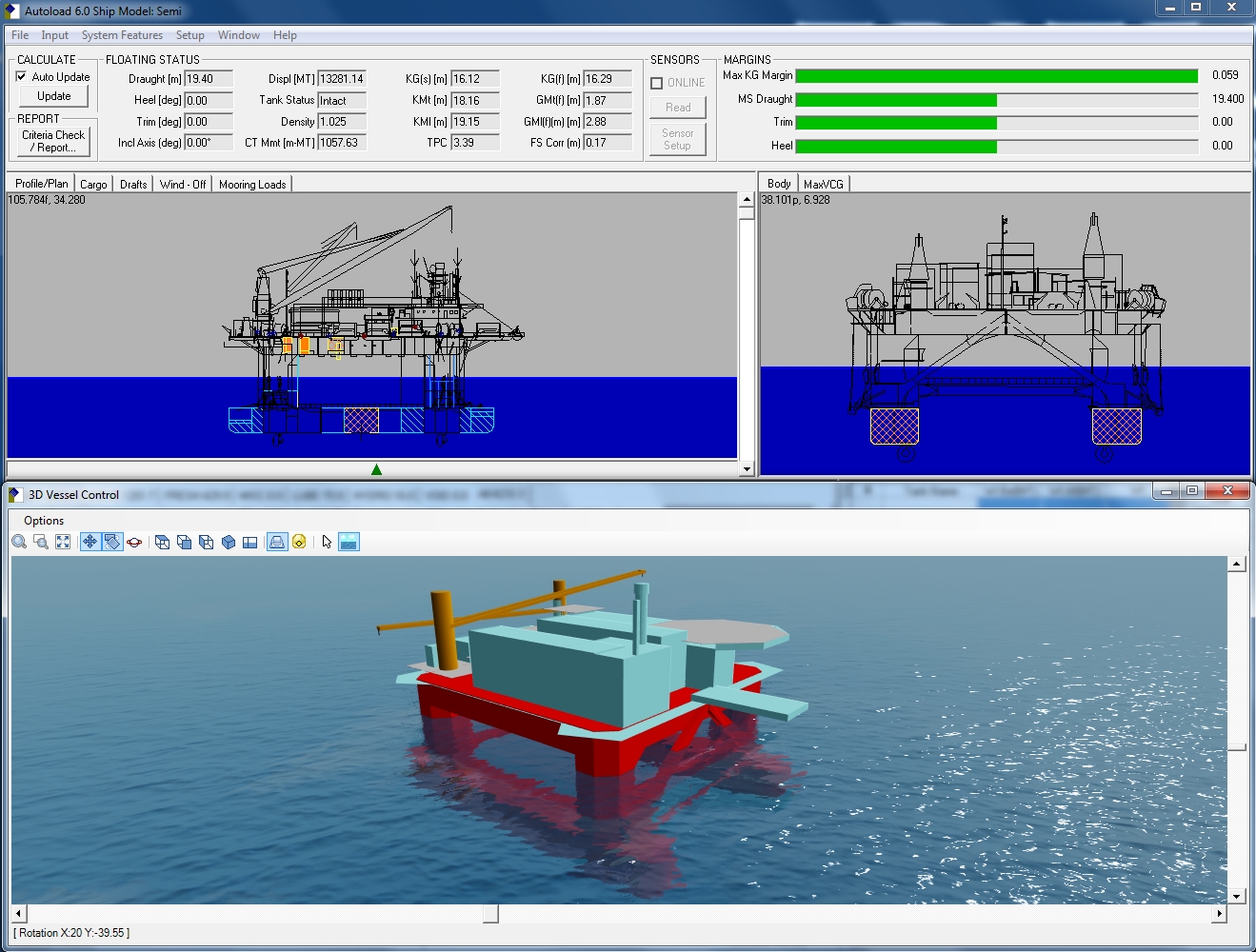
Offshore Solutions
Flexibility, creativity, and each customer’s specific needs are ASC’s driving factors.
This is why we’ve succeeded in three separate markets: stability and cargo management software for the Offshore industry; CAD/CAM software for naval architects and shipyards; and both stability and cargo management software for marine vessel operators and shipping lines. The next time you visit a rig or platform, the chances are good that the rig itself, the support vessels, or the associated tankers are either using ASC stability and cargo management software, or were designed and/or constructed with ASC CAD/CAM software.
ASC Offshore systems integrate draft, stability, ballast, structural strength, cargo, and other data in real time, and provide the tools necessary to make the best possible use of this data for both operations and planning. The software is individually set up to reflect each rig, platform, or support vessel; however, users with multiple installations benefit from both a common interface and a flexible database structure – linking operations and planning functions at sea and ashore.
The capabilities available in ASC Offshore solutions are usually organized into two general product types: Autoload® Offshore™ stability software, and ASC Deck Loading/Cargo Management software.
Autoload Stability Software Systems
Autoload Offshore is developed from a proven line of stability software products that have been operating in a diverse range of vessel types for more than 10 years – including Offshore Support, Tanker, Heavy Lift, Bulk, Container, RoRo, Naval, Coast Guard, Survey, Cable, and Cruise Ships. Autoload makes calculations based on exact digital models – which means you always get simulation based on real parameters and not on interpolation of table-based values. Autoload can input data from any sensor system you choose to operate, and can also accept manually entered data at any time.
Deck Loading/Cargo Management Systems
When you can improve your planning, improve your ability to communicate your plans, and monitor implementation of your plans all in the same system – then you are saving money.
ASC’s Deck Loading/Cargo Management software gives you a highly organized, accurate, flexible, and straightforward system of creating, editing, and tracking loading/stowage plans. You can use these systems to plan, model, and track stowage of all types of cargo – point weights, distributed weights, bulk oil stowage, containers, etc. Real-time planning and operations are integrated in a common interface, improving safety and efficiency at every stage.
The features that make such stowage plans possible include:
- Sophisticated graphics with both global and highly detailed displays of all your stowage areas.
- Synchronization – at any stage in the process – between planned and actual loading/stowage data.
- Cargo grouping in the interface according to customer needs (for example, shipper, cargo type, hazardous material classifications, deck limitations, etc).
- Automatic Stowage Checks for IMDG Segregation, deck height, weight, pressure, and area limitations, cargo space conflicts at every upcoming port, unstackable cargo, etc.
- A highly sophisticated interface that deals with large quantities of cargo quickly and easily, but permits fine adjustments to individual cargo items.
- Organized information display based on departure and arrival conditions for each item to be loaded.
- Highly accessible stowage data – when and where you need it – without ever leaving the deck display.
- Graphic and tabular reports at any stage, tailored to port, cargo type, HAZMAT, and user requirements.
- Overall cargo space utilisation by deck, cargo type, and by percent of total available.
- Tailorable stowage rules for use in automatic stowage operations.
- Flexible standardised stowage patterns for consistent and predictable conditions (cargo, vessel , port – preventing unnecessary repetition of effort.
Autoship Systems Corporation’s worth to our customers is ultimately defined by our functional expertise: first and foremost, we are problem solvers whose tools are mathematics, physics, programming skills, and creativity.
